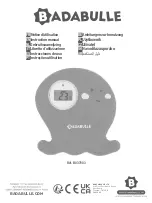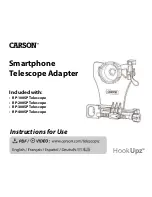
9
Installation
For devices which have no termination of the Word Clock input, e.g. RME Hammerfall with Word Clock i/o, Alesis BRC or
M-Audio ProFire Light bridge, you can use an additional BNC-T piece to terminate the input. Plug the T piece with its center
connector into the input of the receiving device. Then, connect the cable coming from the Word Clock output to one of the
lateral connectors, and the other connector of the BNC-T piece to a 75 Ω resistor forming the BNC termination.
Basically, you should avoid »looping through« Word Clock leads by means of passive BNC-T pieces to preserve the signal qual-
ity, as level drops will be the result. If there is no other way to wire your set-up, please make sure that all Word Clock inputs
(except for the last device in the chain) have their terminations disabled! In a serial Word Clock chain only the last clock input
should have a termination! Never connect more than three devices in series to one output!
General Recommendations for Interface Wirings & Cables
Word Clock
If a cable with a different impedance than 75 Ω is used, a dramatic deterioration of the signal quality is the result! In this case,
the sound quality and synchronization of all devices involved can be impaired.
It is imperative that the lengths of all cables connected are largely the same to ensure that all devices will be synchronized in
phase (exception: cable tolerances).
We recommend using high-grade cables with a good shielding. A length of max. 10 meters (approx. 30 feets) should not be
exceeded!
AES/EBU & S/P-DIF Interconnections
When working with XLR-based AES3/-11 or RCA-based S/P-DIF audio signals at high sampling rates , well-shielded electrical
cables are mandatory to avoid increased radiation! Standard cables are normally useable for sampling rates up to 50.0kHz.
When interconnecting the optical S/P-DIF interfaces with plastic fiber cables, lengths of 10 meters should not be exceeded,
to ensure reliable transmission of your digital audio signals. Glass fiber cables may transfer data reliably even over greater
distances while keeping the signal’s performance on a much higher level than plastic fibre cables can do during transmission!
Information
MUTEC offers optical cables of various lengths that have been specifically tested for the transmission of ADAT™ and S/P-DIF
signals. Ask your local dealer for such cables!








































